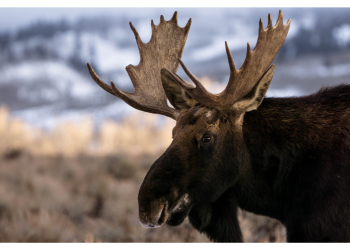Elk are majestic animals that roam the mountains and forests of North America. As one of the largest land mammals on the continent, elk play a vital role in the ecosystem. Their grazing habits, migration patterns, and population numbers can greatly impact the land. An important but often overlooked part of understanding elk is analyzing their poop. Elk droppings can provide a surprising wealth of information to naturalists, wildlife managers, hunters, and anyone interested in elk.
What Does Elk Poop Look Like?
Elk poop resembles dry oval-shaped pellets, usually 1⁄2 to 5/8 inches in length and 1⁄4 to 1⁄2 inches in diameter. The color ranges from dark brown to black, depending on what the elk has been eating. Well-formed, compact pellets indicate the elk is consuming fibrous woody browse like the shoots, stems, and leaves of shrubs or trees. Loose, mushy poop suggests the elk is eating lush green grasses and herbs rich in moisture and proteins.
An adult elk produces on average between 30 to 90 pellets per bowel movement, though this depends on the animal’s size and diet. A mature bull elk’s poop may be 50% larger than a younger female elk. Carefully examining the droppings reveals a wealth of clues about the health, habits, and habitat of elk.
Seasonal Variation in Elk Poop
Elk are ruminant animals with a four-chambered stomach, which allows them to digest a wide variety of plant matter. In winter months when greenery is scarce, elk rely primarily on woody browse, causing their poop to be hard and compact. But in warmer seasons when tender new plant growth emerges, elk transition to eating more herbaceous vegetation. The spring and summer poop pellets tend to be larger in size and looser in consistency.
In autumn when elk eat bountiful berries, acorns, and other mast crops, the poop reflects these dietary shifts. Berry seeds and acorn shell fragments visibly speckle the poop. The high tannin content of acorns gives the poop a noticeably darker hue. Careful analysis of elk droppings provides a seasonal record of the changing landscape and available vegetation.
Health Implications
Beyond diet, elk poop also reveals significant health information. Normal, well-formed oval pellets indicate digestive health and proper nutrient absorption. Chronic loose stool or constipation can signal internal parasites, disease, or malnutrition. Uniformly tiny dry pellets may mean the elk suffers from dehydration or tooth wear issues that prevent proper chewing.
Odd shapes of poop like elongated pencil-like pellets, flat splats, clumps, or loose piles imply some kind of obstruction or infection in the digestive tract. Green-tinged poop suggests the rapid passage of not fully digested plant material. Spotting or smearing of blood in the stool often indicates more serious veterinary problems. Careful fecal analysis thus provides important baseline monitoring of both individual and herd health.
Applications in Tracking, Hunting & Research
For trackers and hunters, elk poop offers the most visible and persistent sign of elk presence in an area, short of an actual sighting. In remote rugged terrain, elk pellet groups confirm habitat use, pathways, and feeding sites. Noting the moisture content and insect larva holes reveals the relative age of the scat. Well-formed oval pellets likely dropped within 24 hours, while mushy pellets with worms and white fungi growing may be several days old.
Population biologists frequently use fecal pellet group counts and elk DNA analysis to study population densities, genetic diversity, movement patterns, and habitat connectivity. Researchers can roughly estimate local elk numbers based on the quantity of poop per acre. Elk pellets also allow efficient, non-invasive collection of hormones, parasites, viruses, bacteria, and DNA samples central to many research projects.
Elk Poop and Ecosystem Health
Elk droppings may seem simple messy nuisance, but they play integral roles in forest and grassland ecosystems. The pellets break down quickly to release concentrated nutrients from consumed vegetation back into the soil. Dung beetles, earthworms, ants, and other invertebrates further break up and distribute the organic matter and bacteria. Elk poop adds vital nitrogen and minerals that fertilize plants and trees.
Pellets dropped across meadows, forest floors, and hillsides represent a significant nutrient recycling process. Elk dung contributes almost 40% of the total feces volume deposited by mammals in some landscapes. This natural transport and concentration of biomass energy stimulates rich soil health and biodiversity. It nourishes grasses, wildflowers, berries, and mushrooms that further support wildlife up and down the food chain.
Misconceptions About Elk Poop
Given the central role elk droppings play in ecosystem functioning, many myths and misconceptions still prevail. A common perception exists that elk pellets somehow ruin landscapes or compete with cattle pastures. While high densities of elk can strongly influence vegetation in localized areas, their poop provides more benefits than harm in moderation across larger habitat mosaics.
Another misconception is that elk poop poses a significant risk of transmitting diseases like chronic wasting disease to humans or livestock. While elk can carry such diseases in rare cases, fecal-oral transmission rates remain extremely low. Taking basic precautions like wearing gloves when handling all animal feces can prevent parasite spread between species.
A final common myth suggests collecting elk antlers sheds or even eating elk poop offers health benefits. No scientific evidence supports such claims about antlers or poop. While elk provide many ecological and economic benefits, their bodily excretions hold little medicinal or nutritional value. Appreciating elk for their integral roles in wilderness aesthetics and biodiversity seems more reasonable.
Why Understanding Elk Poop Matters
In an era of increasing human domination of landscapes for agriculture, development, and recreation across North America, truly wild ecosystems and animals get constantly fragmented and disturbed. Migratory elk represent vital components of mountain, forest, and rangeland habitats. Observing and analyzing something as humble as their poop provides deeper insights into elk natural history along with land management implications.
Noting subtle changes in elk pellet patterns over seasons and years allows important monitoring of environmental and climatic changes too. The out-of-sight, out-of-mind mentality no longer works as human encroachment threatens the existence of all wildlife. Respecting elk means understanding their daily habits and needs at multiple scales. It reminds us that even simple waste products reflect incredible connections across the complex web of life.
Frequently Asked Questions About Elk Poop
How do I identify elk poop?
Elk poop consists of oval dry pellet scats 1/2-5/8 inch long. It tends to be larger than deer poop but smaller than moose or cattle feces. The color varies from light brown to black depending on diet.
What does healthy elk poop look like? Normal elk feces resembles compact, well-formed oval pellets. The consistency ranges from firm dried pellets to soft moist blobs depending on seasonal diet. Healthy poop appears uniform in color without odd textures, blood, mucus, or worms visible.
How many poops does an elk make per day?
Elk defecate about 10-15 times over a 24-hour period. Each bowel movement may contain between 30-90 pellets. So a single elk can produce 300-1500 poop pellets per day depending on size, diet, and season.
Does elk poop help or hurt plants? In moderation, elk scat provides vital nutrients like nitrogen, phosphorous, and potassium that actually fertilize vegetative growth. But extremely high densities of elk grazing and pooping in localized areas over extended periods can damage sensitive habitats.
Can you identify an elk’s gender from its droppings?
Not conclusively. But mature bull elk that are twice the size of cows tend to produce noticeably larger and more abundant poop piles. Analyzing DNA samples from scat can determine gender more reliably.
How long does elk poop last on the landscape?
Elk pellets decompose fairly quickly depending on temperature and moisture conditions. Cool, dry climates may preserve scat for over a year whereas warm, wet environments can break down poop in under a month due to insects and microbes.
This comprehensive guide explores the overlooked ecology of elk poop to highlight vital connections between elk health, habitat usage, ecosystem functions, and environmental change. What may first appear as common waste matter actually represents an incredible array of natural processes upon closer perspective. Analyzing and respecting something as humble as elk droppings ultimately allows deeper insights into land conservation and wildlife stewardship.






